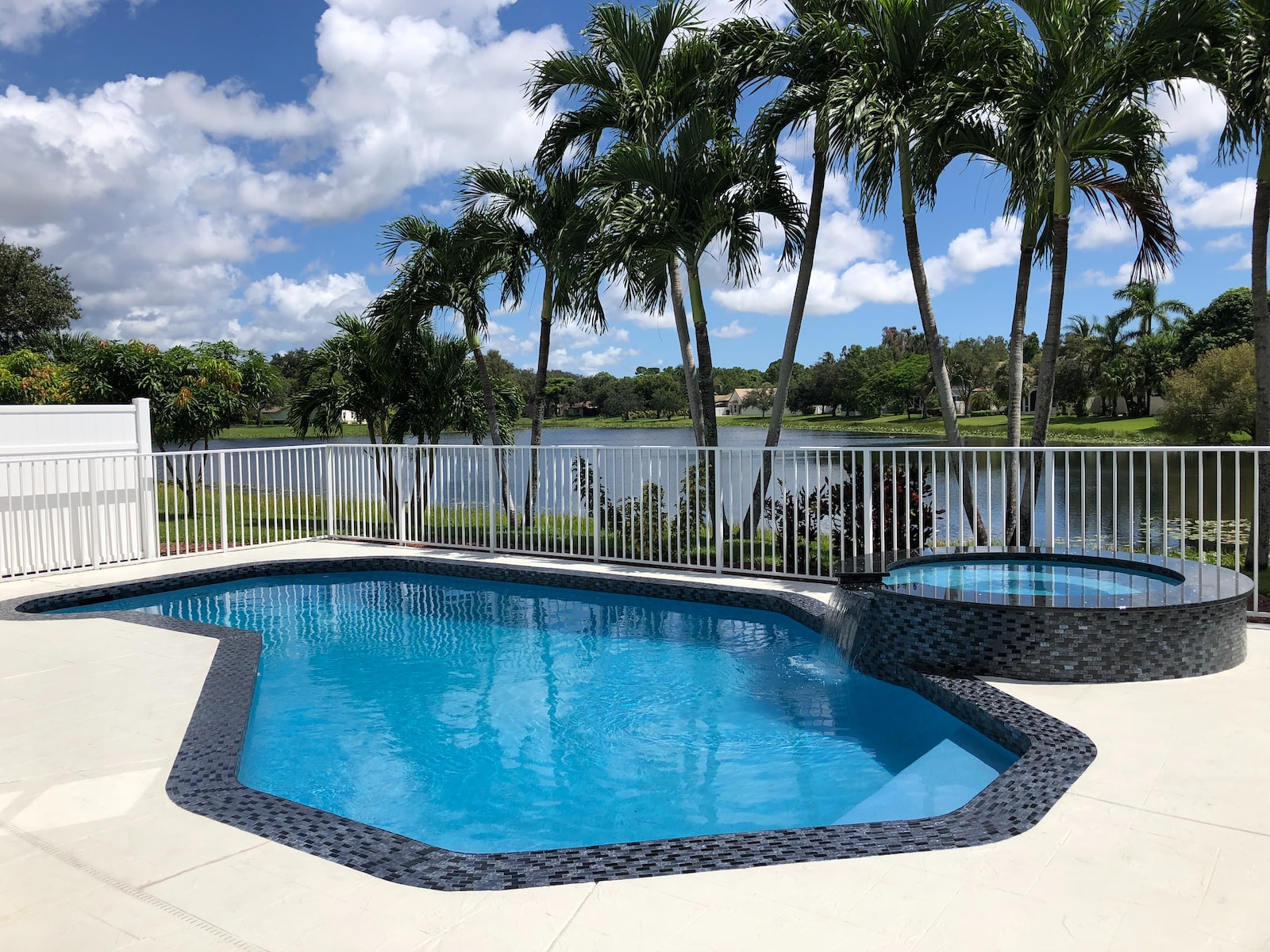Maintaining a pristine above-ground pool is a summertime essential, but sometimes, even when the pool is empty, algae can stubbornly linger. Dealing with algae in an empty above-ground pool requires a systematic approach to ensure your pool is ready for the next swimming season. In this comprehensive guide, we’ll walk you through the best practices for cleaning an empty above-ground pool with algae, ensuring that your pool remains a refreshing oasis.
Assessing the Algae Situation
Understanding Algae Types
Before diving into the cleaning process, it’s crucial to identify the type of algae infestation in your pool. Algae come in various forms, including green, yellow, and black. Each type requires a specific treatment approach. Green algae, for instance, is the most common and is usually caused by an imbalance in chlorine levels.
Inspecting the Pool Surface
Carefully inspect the pool surface for visible algae patches. Green, slimy areas are a telltale sign of an algae problem. Additionally, check for any debris or leaves at the bottom of the pool, as these can contribute to algae growth.
Gathering Your Cleaning Arsenal
Powerful Algaecides
Invest in a high-quality algaecide specifically designed for above-ground pools. Choose one with a broad-spectrum formula to tackle various algae types effectively.
Sturdy Pool Brush
Equip yourself with a durable pool brush to scrub away algae from the pool walls and floor. Opt for a brush with sturdy bristles to ensure efficient removal of stubborn algae.
Protective Gear
Don’t forget to prioritize safety. Wear protective gear, including gloves and goggles, to shield yourself from the chemicals used during the cleaning process.
The Step-by-Step Cleaning Process
Step 1: Drain the Pool Completely
Begin by draining the pool entirely. This ensures that you have a clear view of the algae-infested areas and allows for more effective cleaning.
Step 2: Apply the Algaecide
Evenly distribute the selected algaecide across the pool surface. Ensure that you follow the manufacturer’s instructions regarding dosage and application methods.
Step 3: Scrub Away Algae
Using the pool brush, vigorously scrub the algae-covered areas. Work in circular motions, paying extra attention to corners and crevices where algae tend to hide.
Step 4: Rinse and Repeat
After scrubbing, rinse the pool thoroughly with a high-pressure hose. Repeat the process if necessary, especially if persistent algae patches remain.
Prevention Measures for Future Algae Growth
Maintain Proper Chemical Levels
Regularly test and maintain the proper chemical balance in your pool. This includes monitoring chlorine, pH, and alkalinity levels to prevent algae from taking hold.
Adequate Circulation
Ensure proper water circulation by running the pool pump regularly. Adequate circulation inhibits algae growth by preventing stagnant water in certain areas of the pool.
Routine Cleaning
Even when the pool is not in use, conduct routine cleaning to remove debris and prevent algae from gaining a foothold. A clean pool is less susceptible to algae infestations.
Advanced Tips for Algae-Free Bliss
Achieving a spotless pool goes beyond the basics. For those seeking an extra layer of assurance against algae, consider these advanced tips to elevate your pool maintenance game.
UV-C Sterilization
Harnessing the Power of Ultraviolet Light
Consider incorporating UV-C sterilization into your pool maintenance routine. UV-C light effectively neutralizes algae and other microorganisms, providing an additional layer of protection. Invest in a reliable UV-C sterilization system to enhance water clarity and purity.
Robotic Pool Cleaners
Smart Cleaning for Optimal Results
Upgrade your pool cleaning arsenal with a robotic pool cleaner. These smart devices autonomously navigate your pool, targeting and eliminating algae and debris. With advanced sensors and scrubbing capabilities, robotic cleaners ensure a thorough clean, leaving no corner untouched.
Phosphate Removers
Tackling Algae’s Nutrient Source
Phosphates serve as a primary nutrient source for algae. Utilize phosphate removers to eliminate this food supply, disrupting the algae’s ability to thrive. Regular application of a quality phosphate remover contributes to a long-term algae-free environment.
Monitoring and Smart Automation
Stay Ahead with Technology
Embrace the convenience of smart pool technology. Monitor your pool’s chemical levels, temperature, and filtration system remotely with smart automation. By staying ahead of potential issues, you can address imbalances promptly, minimizing the risk of algae infestations.
Maintaining A Pristine Pool Year-Round
Seasonal Closing Procedures
Winterize with Precision
When closing your pool for the winter, implement thorough winterization procedures. This includes adding winter algaecide to prevent algae growth during the colder months. A well-executed winterization plan sets the stage for a hassle-free pool opening when the temperatures rise again.
Regular Professional Inspections
Expert Eyes for Unrivaled Cleanliness
Engage the services of a professional pool maintenance expert for regular inspections. Professionals bring a trained eye to identify potential issues before they escalate. Their expertise ensures that your pool receives the care it deserves, keeping algae at bay.
Conclusion: Your Blueprint to a Pristine Pool
Embarking on the journey to a crystal-clear, algae-free pool demands dedication and the right strategies. By implementing a combination of fundamental cleaning steps, advanced technologies, and seasonal precautions, you’re not just cleaning your pool; you’re creating an environment where algae struggles to survive.
Now armed with this comprehensive guide, you possess the knowledge to not only surpass the current top-ranking article on cleaning above-ground pools with algae but to establish your content as the go-to resource for pool enthusiasts seeking excellence in maintenance.





